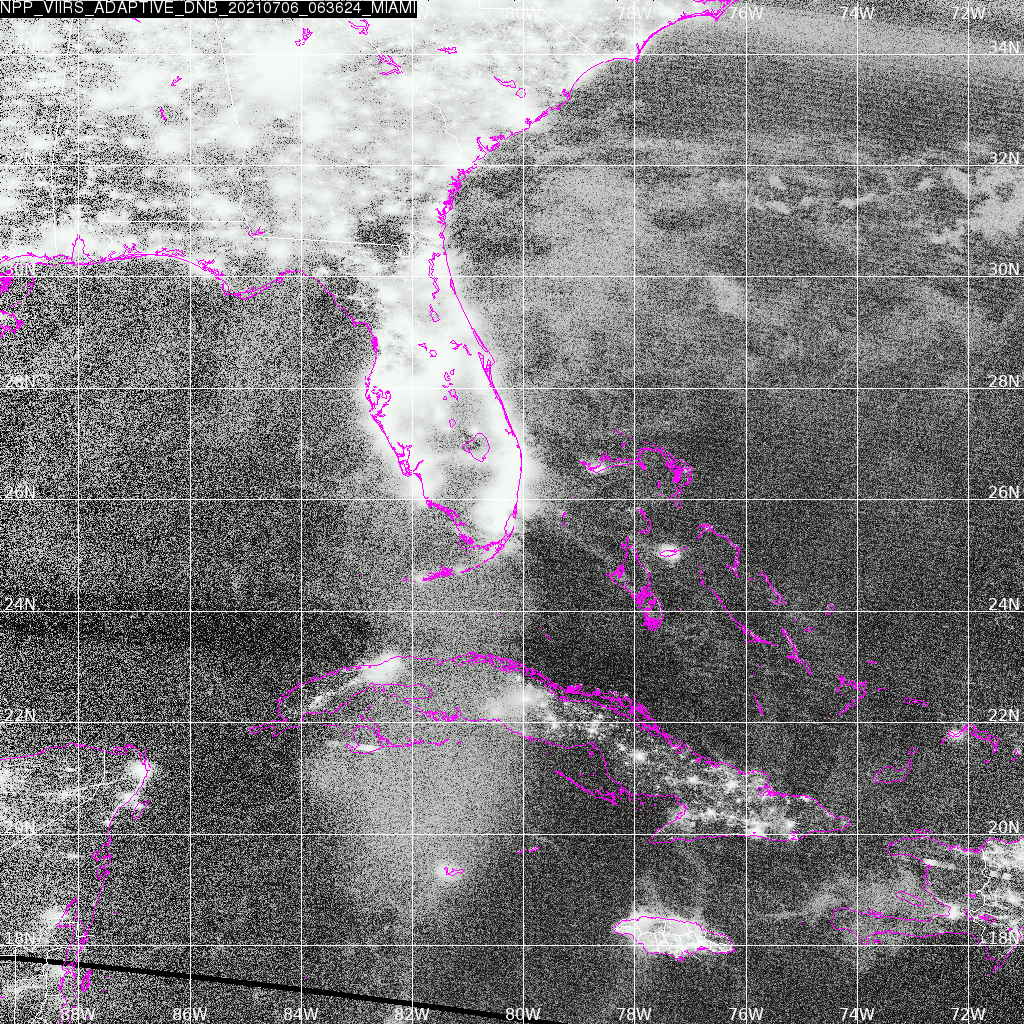
[ Archive ]

 |
CIMSS-NOAA Weekly Report [ Archive ] |
 |
CIMSS AND ASPB WEEKLY HIGHLIGHTS FOR THE WEEK ENDING JULY 9, 2021
PRODUCTS AND APPLICATIONS:
AWARDS AND RECOGNITION:
PUBLICATIONS:
Instrument Study Published: A second study of the Precipitation Imaging Package (PIP) was published last month in a special issue of Remote Sensing. This work focused on the ability of the PIP to discriminate accurately rain versus snow events. The study utilized the long-duration field site at the National Weather Service in Marquette, Michigan. This work included work from co-authors at the University of Wisconsin-Madison Space Science and Engineering Center/Cooperative Institute for Meteorological Satellite Studies (SSEC/CIMSS; Pettersen, Wood), NOAA (Kulie), and the Atmospheric and Oceanic Sciences Department (Mateling, Shates). The publication is available at https://www.mdpi.com/2072-4292/13/11/2183. (C. Pettersen, SSEC, 608-772-6270, M. Kulie, E/RA2, 608-263-6583, mark.kulie@noaa.gov).
Manuscript Published on Atmospheric Rivers and Cold-Season Precipitation in the Upper Great Lakes: A manuscript titled "The Influence of Atmospheric Rivers on Cold-Season Precipitation in the Upper Great Lakes Region" has been published in the Journal of Geophysical Research-Atmospheres (https://agupubs.onlinelibrary.wiley.com/doi/10.1029/2021JD034754). This study documents how atmospheric rivers (ARs) influence winter precipitation at an interior continental site located near Marquette, Michigan. Using a multi-year dataset of ground observations combined with a MERRA-2 reanalysis AR dataset, the study shows that synoptically-forced cold-season precipitation events produced by deeper cloud structures are frequently associated with inland ARs. These events are also associated with enhanced precipitation rates compared to non-AR events. Additionally, cold-season AR events at this site are four times as likely to occur as rain events despite adopting a 2C surface temperature threshold in an effort to investigate primarily surface snow events. Upper Great Lakes cold-season AR events are also linked to negative phases of the Pacific-North American pattern and Pacific Decade Oscillation. Marian Mateling (University of Wisconsin Dept. of Atmospheric and Oceanic Sciences, UW-AOS) is the lead author, while Claire Pettersen (Cooperative Institute for Meteorological Satellite Studies, CIMSS), Mark Kulie (NESDIS/STAR), Kyle Mattingly (Rutgers University), Stephanie Henderson (UW-AOS) and Tristan L'Ecuyer (UW-AOS/CIMSS) are coauthors. (C. Pettersen, CIMSS, 608-772-6270; M. Kulie, E/RA2, 608-263-6583; T. L'Ecuyer, CIMSS, 608-890-2107)
WORKSHOPS, CONFERENCES, AND MEETINGS:
TRAINING AND EDUCATION:
MEDIA AND OUTREACH:
SSEC and CIMSS Scientists in the News: Scientists at the University of Wisconsin-Madison (UW) Space Science and Engineering Center (SSEC) and the Cooperative Institute for Meteorological Satellite Studies (CIMSS) provide expert interviews, imagery and case studies to promote science. This week: 1) Three exemplary high school seniors were awarded the CIMSS Verner E. Suomi Scholarship for the 2021-2022 academic year. SSEC News published this story: https://www.ssec.wisc.edu/news/articles/13736/. 2. CIMSS Satellite Blog contributors Scott Lindstrom and Scott Bachmeier published case studies on "Creating RGB imagery using SIFT and Geo2Grid" (July 8), "Elsa briefly regains hurricane intensity before making landfall along the Florida coast" (July 6-7), "Using Polar-Orbiting Satellite Imagery from Direct Broadcast sites to understand Elsa" (July 6), "Convective nowcasting over Wisconsin with NUCAPS" (July 5), "Hurricane Elsa" (July 2), and "Displaying all NUCAPS profiles from a single granule" (July 2). Read more: https://cimss.ssec.wisc.edu/satellite-blog/. (J. Phillips, SSEC, 608-262-8164, C. Bloch, CIMSS, S. Bachmeier, CIMSS, S. Lindstrom, CIMSS)
 (Click image to enlarge)
(Click image to enlarge)
Figure: Polar-orbiting satellite imagery from Direct Broadcast sites like that from the Atlantic Oceanographic and Meteorological Laboratory can be created with the Community Satellite Processing Package and used to understand tropical systems such as Elsa. Read more at the CIMSS Satellite Blog: https://cimss.ssec.wisc.edu/satellite-blog/archives/41405. Credit: CIMSS, CSPP.
OTHER:
TROPICS Pathfinder Satellite Successfully Launched into Orbit: As the lead sentinel for the NASA Earth Venture Instrument-III mission, the Time-Resolved Observations of Precipitation structure and storm Intensity with a Constellation of Smallsats (TROPICS) pathfinder satellite was successfully launched by SPACE-X from Cape Canaveral on June 30, 2021. The pathfinder satellite is an identical copy of the main constellation of 6 smallsats to be launched in 2022 that will provide rapid-refresh microwave measurements over the tropics that can be used to observe the thermodynamics and precipitation structure of tropical cyclones over the entire storm lifecycle. The pathfinder satellite will enable full testing of the technology, communication systems, data processing, and data flow to application users in advance of the constellation's launch, thereby helping ensure the success of the TROPICS mission. UW-CIMSS/SSEC will play key roles on the science and data processing teams. (C. Velden, CIMSS, 608-262-9168, R. Bennartz, SSEC, D. Herndon, CIMSS, T. Greenwald, CIMSS).
| Archived Weeklies Page | Submit a report item |